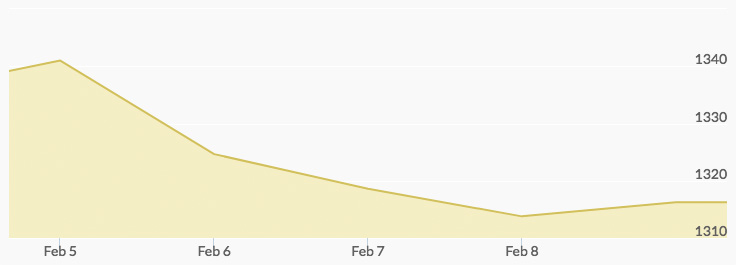
The price of gold opened up at $1,335.71 on Monday, and trading continued to push gold prices higher to a close of $1,336.96. Tuesday opened with gold prices even higher at $1,337.26, but they slipped to end the day at $1,322.01. Wednesday opened up at $1,334.35 but saw another pullback throughout the day to close at $1,315.38. Thursday’s open slipped to $1,311.91, but the market rallied to end trading at $1,317.56. Friday’s trading opened slightly off at $1,316.49, traded in a tight range for the day, and ended the week with the price of gold slightly up on Friday’s open at $1,316.65.
The early part of the week was dominated by a stock market crash in the U.S., European, and Asian markets. By the time trading opened in New York, the MSCI Asia Pacific Index had already fallen by 1.5 percent for its worst crash since November 2016. 1 The carnage continued into Tuesday with the Nikkei down 6.5 percent, the Hang Seng off 6 percent, the FTSE 100 sliding by 3.5 percent and the Stoxx 600, which tracks Europe’s largest companies, down 3 percent. 2 Markets appeared to settle midweek but confidence had clearly been shaken, as pundits continued to argue over what this means for equities going forward. 3 Concerns were not helped by additional losses on Thursday and Friday, although markets stabilized somewhat by the Friday close. 4
As if equities were not sufficient reason for investors to diversify into precious metals, the U.S. government again shut itself down in the early hours of Friday morning because it couldn’t reach a budget agreement. 5 Kentucky Senator Rand Paul’s opposition to the massive deficit spending that would fund the budget bill caused the shutdown. He gave a speech on the floor vehemently expressing his concern that the bill would explode the country’s already enormous $20 trillion national debt. 6 In the House, negotiations with both conservative deficit hawks and progressive Democrats concerned about immigration issues proved a challenge. However, eventually the spending bill was passed. The episode resulted in more political chaos, more spending, and more reasons to be concerned about the health of this economy.


